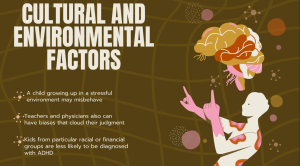Attention Deficit Hyperactivity Disorder (ADHD) is a widespread condition that can occur in children and adults. It makes it difficult to concentrate, remain organized, and manage impulses. Although most people have ADHD, it is not easy to diagnose. Physicians cannot diagnose the condition using one test, which creates a lot of confusion.
Multiple factors, including symptoms overlapping with other conditions, stigma, and variation among individuals, make it even more difficult to diagnose correctly. This article discusses the greatest challenges in the diagnosis of ADHD and why, in most cases, it takes time to obtain the correct diagnosis.
ADHD Symptoms Can Look Like Other Conditions
One of the largest challenges of diagnosing ADHD is that the symptoms resemble the symptoms of other conditions. A restless and attention-deficient child could have ADHD but might also have depression, anxiety, or a sleeping disorder. Because these all present with overlapping symptoms, physicians must first rule out other explanations for symptoms before an ADHD diagnosis is made.
Physicians utilize set guidelines in diagnosis. They use resources such as the ICD-10 classification system, which includes codes for various medical conditions. To ensure that the diagnosis is correct, they need to find ADHD ICD-10 codes that align with the patient’s symptoms.
The diagnostic process is further hindered by social stigma and limited awareness, discouraging many from seeking help. Clinicians often use f40 to aid in identifying coexisting conditions that might mask or mimic ADHD symptoms, making a comprehensive evaluation essential.
Even with these codes, though, the process may not be easy. A child may act differently in different situations, thus making it difficult to determine if their challenges emanate from ADHD or another cause.
There Is No One Test for ADHD
In contrast to illnesses like diabetes or hypertension, ADHD does not have a medical test in the form of a blood test or a brain scan. Doctors have to obtain information from a variety of sources, such as parents, teachers, and the individual under examination. They might employ surveys, interviews, and behavior checklists to search for patterns.
Since the process relies heavily on observation and self-reports, errors are possible. Some people may exaggerate symptoms, while others may downplay them. This makes it difficult to get an accurate diagnosis. A doctor may also need to observe the person over time to confirm whether their symptoms meet the criteria for ADHD.
ADHD Symptoms Change with Age
ADHD does not look the same in everyone, and it can change as a person grows older. Young children with ADHD are often very active, while teenagers may struggle more with focus and organization. Adults with ADHD may have trouble managing their time or staying on top of work tasks.
Due to these shifts, the diagnosis of ADHD across various age groups is challenging. Some children grow out of some of the symptoms, but others evolve into new issues. An individual might not even know they have ADHD until adulthood when tasks such as employment and relationships become more difficult to accomplish.
Gender Differences in ADHD Diagnosis
ADHD is diagnosed more frequently in boys than girls, but it doesn’t mean that boys get the condition more than girls. Rather, ADHD presents differently in girls, and their symptoms go unnoticed. Boys with ADHD tend to be hyperactive and disruptive, and so their symptoms are noticed in school. Girls tend to have inattention-type symptoms, like daydreaming or forgetfulness.
Since such symptoms are less apparent, most girls don’t get diagnosed with ADHD until later in life. They might even go undiagnosed for their entire lifetime, and this can affect their self-esteem, anxiety level, and also their performance at school. Physicians are now making efforts to diagnose ADHD in girls earlier, but misdiagnosis is still a prevalent issue.
Social Stigma and Misunderstanding
There is still a great deal of misperception about ADHD. Some people think that kids with ADHD are lazy or simply need to be disciplined more. Others believe ADHD is not a true condition and that individuals use it as an excuse for poor behavior.
Due to these beliefs, parents will not get their children diagnosed. Adults with ADHD will also not get help because they do not want to be judged. This can keep individuals from getting the help that they require, and the issues become worse.
Cultural and Environmental Factors
A person’s history can also determine if they are diagnosed with ADHD. In certain cultures, mental illness is not discussed, so it becomes more difficult for individuals to seek treatment. Sometimes, the environment of a child will cause them to behave differently. A child growing up in a stressful environment may misbehave, but that does not necessarily indicate that they have ADHD.
Teachers and physicians also can have biases that cloud their judgment. Research indicates that kids from particular racial or financial groups are less likely to be diagnosed with ADHD even if they show symptoms. What this does is cause some children to go without the support they need simply due to circumstances.

Overdiagnosis and Medication Concerns
While others have difficulties obtaining an ADHD diagnosis, others obtain one in haste. Doctors in some instances diagnose ADHD without knowing other alternatives. A child can be hyperactive because of sleep deprivation, a poor diet, or stressful home environments, but they can be stigmatized with the label of ADHD.
There is also a fear of overmedication. Stimulant medication can help a person with ADHD concentrate, but it is not appropriate for everyone. Some physicians might prescribe them without completely assessing whether ADHD is the proper diagnosis. This can cause unnecessary side effects and make it more difficult for the individual to receive the appropriate type of assistance.
The Cost of ADHD Diagnosis
Getting an ADHD diagnosis is costly. Comprehensive evaluation may involve visits to several specialists, including psychologists and neurologists. In a few instances, families have to shell out-of-pocket expenses for testing, which can run hundreds or thousands of dollars.
For people who don’t have good health insurance, these expenses can be a huge deterrent. Some families might not even be able to afford an assessment at all, so children and adults will be without the assistance they require. In schools, there can be limited resources available which will make it more difficult for students to get an official diagnosis.
The Emotional Toll of Seeking a Diagnosis
The diagnosis process for ADHD can be frustrating and stressful. Most individuals spend years without being aware of why they are having difficulty with focus, organization, or impulsivity. They might receive complaints from parents, teachers, or employers and end up feeling guilty and shameful.
For parents too, it might be challenging to seek a diagnosis for their child. They worry about the kind of future they will have following the diagnosis, or how society will treat their child. They might even encounter challenges in gaining the right kind of support.
Conclusion
It’s difficult to diagnose ADHD. Symptoms blur with other disorders, there is no one test, and gender, culture, and social stigma can complicate matters. As education and awareness about ADHD increase, however, many individuals still encounter barriers to being diagnosed appropriately.
Doctors, teachers, and families need to cooperate to make the diagnosis process better. Continued research, better screening tools, and increased awareness can help ensure individuals with ADHD receive the support they need to thrive.
FAQs
- Can ADHD go undiagnosed for a long time?
Yes, a lot of people do not get an ADHD diagnosis until they reach adulthood, particularly if their symptoms were ignored as kids. - Is ADHD ever treated with medicine?
No, although medicine may benefit some individuals, others treat ADHD through therapy, changing their lifestyle, and support methods. - Do the symptoms of ADHD change over time?
Yes, the symptoms may change as an individual grows older, hence why ADHD presents differently in children, adolescents, and adults.

